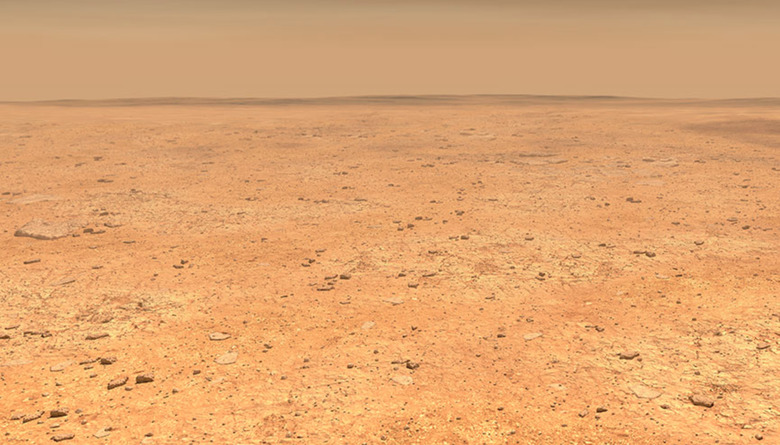NASA's Mars Rover Spots A Martian Dust Devil
- NASA's Curiosity rover managed to capture images showing a dust devil cruising along the dry landscape.
- Dust devils occur when temperature irregularities create vortexes, much like on Earth.
- Mars and Earth are shockingly similar in many ways, in this is a handy reminder of that fact.
We know a lot about Mars thanks to NASA's Red Planet rovers. The machines have provided us with some of the most stunning glimpses of our planetary neighbor ever, while also revealing many of the planet's secrets. Thanks to those machines, we know that Mars is a dusty, mostly dry place, and we also know that martian wind can kick up in a hurry.
We've seen the evidence of the planet's incredible wind many times, including the massive dust storm that doomed the Opportunity rover after it blocked out the Sun. Now, in a new update to the Curiosity mission blog, we're treated to a truly incredible set of images that show a Martian dust devil in action.
Situated in the Gale Crater, Curiosity has been exploring the Mars landscape for many years now. It regularly captures images of its surroundings and beams them back to Earth. These images help the Curiosity team at NASA plan for future travel, but occasionally the images reveal something else. In this case, it's a swirling torrent of wind sweeping across the dusty terrain.
You have to almost squint to see it, and the fact that the images are in black and white doesn't necessarily help matters at all, but you can definitely see the mini tornado-like tail of the dust devil cruising along in the distance.
If you're having trouble seeing it, check out the larger version and open your browser window to full screen. You can see the dust devil, which looks like a white line trailing along in the distance. It's not exactly a powerful torrent, but it's enough to carry surface dust high into the air.
"It's almost summer in Gale crater, which puts us in a period of strong surface heating that lasts from early spring through mid-summer," NASA's Curiosity team explains. "Stronger surface heating tends to produce stronger convection and convective vortices, which consist of fast winds whipping around low pressure cores. If those vortices are strong enough, they can raise dust from the surface and become visible as 'dust devils' that we can image with our cameras."
It's kind of crazy when you consider all the ways that Mars is similar to Earth. A rocky world that likely benefited from a thick atmosphere and had flowing water on its surface. The Mars we see today mimics many of the driest regions on Earth, and as mankind continues to warm our own planet, perhaps our red neighbor serves as a warning of what we're in for if we can't curb our bad habits.
